Mercedes-Benz aims to go all-electric in at least some markets by 2030 but to do that it will need to launch electric equivalents of each of its many gasoline-powered models. The 2023 Mercedes-Benz EQB fits that description to the letter.
Where the EQS sedan aims to fill a similar role to the S-Class without directly copying it, the EQB is literally an electric version of an existing Mercedes crossover SUV — the GLB-Class. It uses the same body shell as the GLB, even retaining that model’s optional third-row seats.
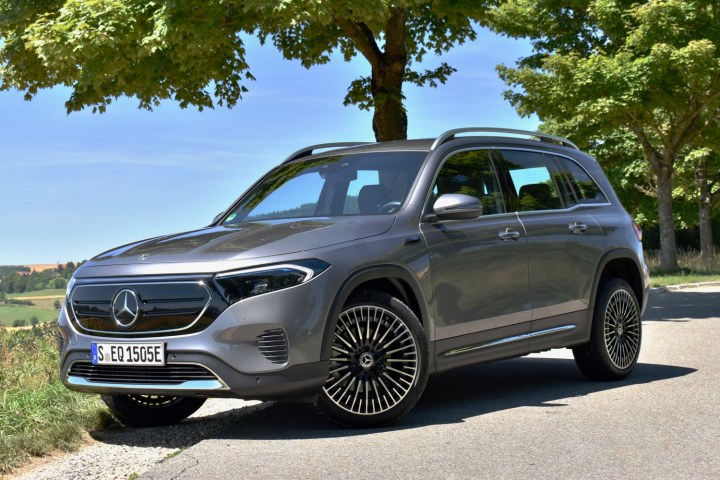
That puts the EQB on the more affordable end of the Mercedes EV spectrum. Just as the GLB is one of the automaker’s least-expensive SUVs, the EQB will be the first entry-level Mercedes EV for the U.S. when it arrives here later this summer. Pricing starts at $55,550 for the base EQB 300 4Matic model and $59,100 for the more powerful EQB 350 4Matic. Both have standard all-wheel drive (hence the 4Matic nomenclature) and will be available in base, Exclusive, and Pinnacle trim packages.
The EQB might once have been considered a Tesla Model Y rival, but Tesla’s recent price increases mean the Mercedes now substantially undercuts the Model Y in price. The EQB now takes aim at the Volvo XC40 Recharge and Genesis GV60, as well as the upcoming Lexus RZ. We drove some European-spec models in Germany ahead of the EQB’s U.S. launch to see how it will measure up.
Design and interior
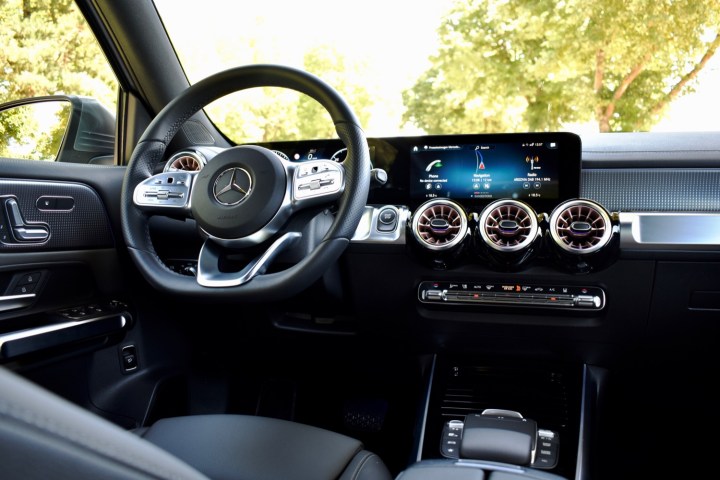
The EQB’s styling combines the boxy shape of the GLB with the smooth grille of other EQ electric models. That makes it stand out from other electric SUVs, most of which shy away from the traditional utility-vehicle look in favor of more streamlined shapes.
Like the GLB, the EQB will be offered in a standard two-row, five-seat, configuration, or with seven seats across three rows. Complete interior measurements weren’t available at the time of publication, but the listed 40.7 inches of front headroom matches the GLB, while the 38.5 inches of second-row headroom (for two-row models) is 0.8 inches less than the GLB. Those figures are also pretty close to the Volvo XC40 Recharge.
Styling combines the GLB’s boxy shape with the smooth grille of other EQ electric models.
Still, the EQB is the only electric SUV of this size and price to offer a third row, and its tall roof and wide tailgate aperture should make loading and unloading cargo easier than with the low-roof competition. We’ll have to wait for Mercedes to publish cargo-space figures for a thorough comparison, however.
The interior carries over from the gasoline GLB, with the same pleasingly functional design. As in the GLB, the tall roof creates a nice airy feeling, but the seating position is a bit lower than some SUV drivers might expect. And like the GLB, interior materials are a bit plain; Mercedes doesn’t hide the fact that this is an entry-level model. Multicolor ambient lighting and a panoramic sunroof are available, though, along with heated, ventilated, and massaging front seats. The EQB also gets upholstery made from recycled PET bottles. That seems like an appropriate choice for an EV, although the athletic-clothing-like appearance seemed more suited to a Subaru than a Mercedes.
Tech, infotainment, and driver assist
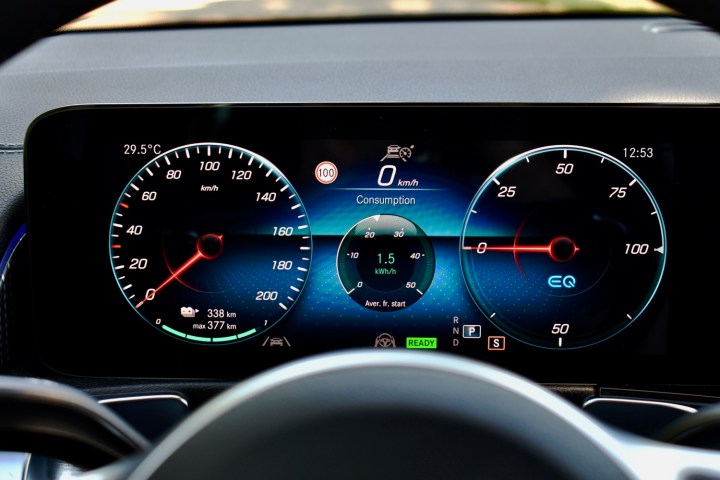
The EQB comes standard with a 10.25-inch digital instrument cluster and 10.25-inch touchscreen placed side-by-side to form one giant playground for pixels. Wireless Apple CarPlay and Android Auto are standard as well, while a head-up display is optional.
As in the GLB, we liked the Mercedes-Benz User Experience (MBUX) infotainment system, particularly the voice recognition, which is more responsive and accurate than most competitor systems. The EQB is also available with augmented reality navigation, which Mercedes added to MBUX after the GLB launched. When rolling up to a turn, it displays a video feed on the central touchscreen with overlaid arrows, showing exactly where you need to go. That helped compensate for the navigation system’s inability to judge distances to turns. In multiple test cars, it indicated that turns were a few feet further away than they actually were.
We liked the MBUX infotainment system, particularly the voice recognition.
While blind-spot monitoring is standard, you’ll have to select an optional Driver Assistance Package to get most of the available driver aids. That package includes adaptive cruise control (with route-based speed adaptation), automated lane centering, automatic emergency braking, lane-keep assist, and speed-limit assist.
The Driver Assistance Package also includes the Pre-Safe Plus and Pre-Safe Sound features that have been rolling out in other Mercedes models. If a collision is deemed imminent, Pre-Safe Plus automatically applies and holds the brakes to keep the car from moving after the initial impact. Pre-Safe Sound emits a specific tone that can help reduce hearing loss in the event of a crash, Mercedes claims.
Driving experience
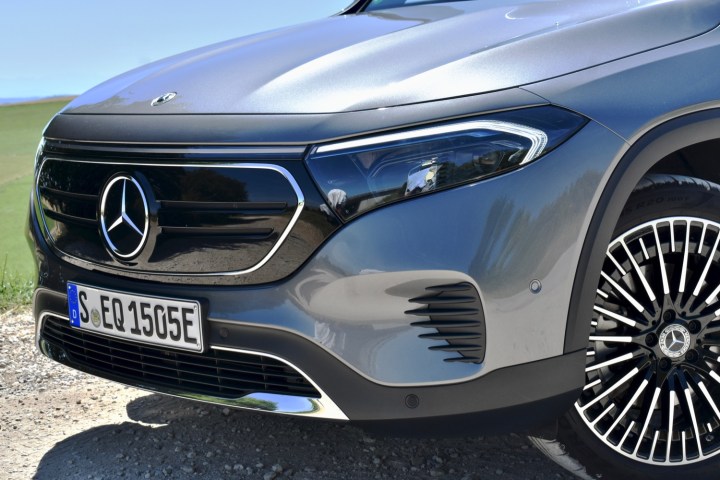
All EQB models have a dual-motor all-wheel drive powertrain and a lithium-ion battery pack with 70.5 kilowatt-hours of usable capacity. The base EQB 300 4Matic is rated at 225 horsepower and 288 pound-feet of torque, and the EQB 350 4Matic delivers 288 hp and 384 lb-ft of torque.
That means even the base EQB 300 has a power advantage over its gasoline GLB 250 sibling, which extracts 221 hp and 258 lb-ft from a 2.0-liter turbocharged four-cylinder engine. Mercedes does offer a 302-hp AMG performance version of the GLB, though. It hasn’t announced an equivalent EQB variant, but with AMG branching out into EVs, that may be just a matter of time.
The EQB fell short of true one-pedal driving.
The EQB would probably lose to the Volvo XC40 Recharge in a drag race, thanks to the latter’s 402 hp and 486 lb-ft of torque, but it still felt plenty quick for everyday use. While not sporty, the Mercedes had better handling balance than the Volvo, offering similar levels of comfort and refinement but also taking corners in a more dignified way. The EQB seemed to have less body roll in corners than the XC40, making for a drama-free experience.
While some EVs dial in a lot of regenerative braking at all times to recover energy, Mercedes believes it’s more efficient to combine regen and coasting. So the EQB will automatically change the level of regeneration based on road conditions, including inclines, corners, and speed limits, as well as whether another vehicle is in front. However, we preferred to use the steering-wheel paddles to manually increase regeneration when slowing for a corner or intersection. Even with regen dialed all the way up, though, we found the EQB fell short of true one-pedal driving, meaning we still needed to use the brake pedal in some situations.
Range, charging, and safety

Official range figures weren’t available at the time of publication, but Mercedes estimates a 230-mile range. That’s more than the 223-mile range of the Volvo XC40 Recharge, but less than the maximum 248 miles achieved by the Genesis GV60 in Advance trim. The Audi Q4 E-Tron is expected to have a 241-mile range whenever it goes on sale.
All EQB models can charge on a 240-volt Level 2 AC source at 11 kilowatts, allowing for a full recharge in 11.25 hours, according to Mercedes. Standard 100-kW DC fast charging can take the battery from 10% to 80% in a claimed 32 minutes. Mercedes will offer customers unlimited 30-minute charging sessions at Electrify America stations for two years after activating a Mercedes Me Charge account.
We expect the EQB to get the same warranty coverage as other Mercedes EVs. That means a four-year, 50,000-mile, new-vehicle warranty and a 10-year, 155,000-mile, battery warranty.
The EQB hasn’t gone on sale in the U.S. yet, so crash test ratings from the Insurance Institute for Highway Safety (IIHS) and National Highway Traffic Safety Administration (NHTSA) aren’t available yet.
How DT would configure this car
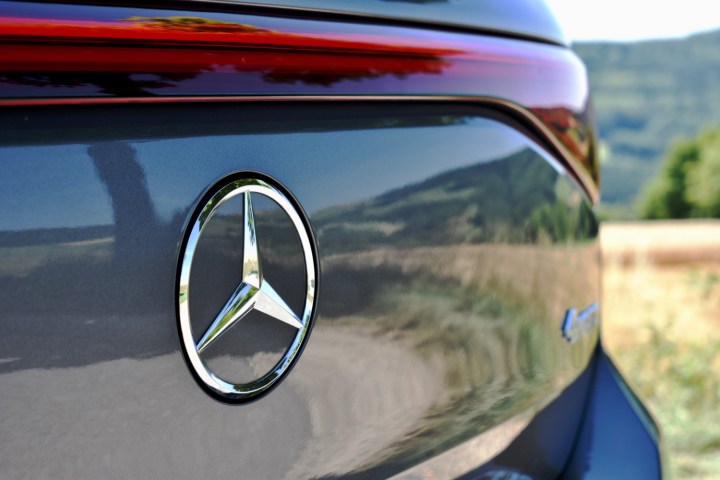
We would wait for official range ratings before choosing between the base EQB 300 4Matic and the more powerful EQB 350 4Matic model. The EQB 350’s extra 63 hp and 96 lb-ft of torque would be good to have, but not if it comes with a major range penalty.
Regardless of powertrain, the EQB comes fairly well equipped. Most of the key tech features, including the dual 10.25-inch screen setup and augmented reality navigation, are standard on the base trim level. But if you want to check every box, you’ll need to upgrade.
The mid-level EQB Exclusive trim level adds wireless phone charging, while the top Pinnacle adds a Burmester surround-sound system and a 360-degree camera system. As mentioned above, adaptive cruise control is only available with the optional Driver Assistance Package.
Our take
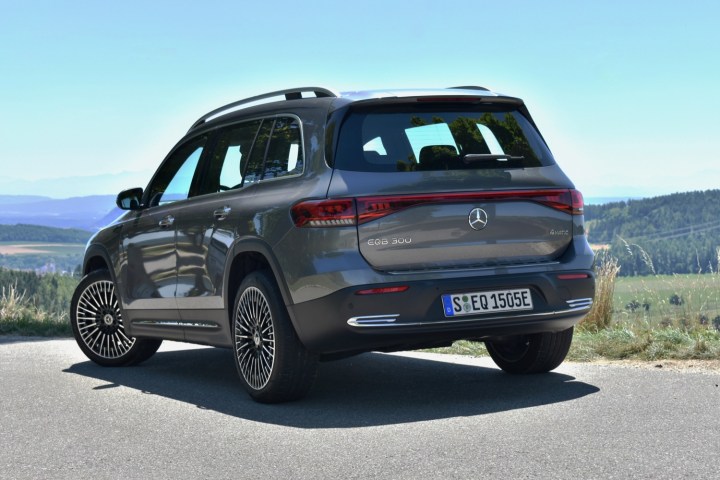
The EQB takes everything that was good about the Mercedes GLB-Class and adds an electric powertrain. That makes for a pretty satisfying compact SUV.
Like the GLB, the EQB features styling that’s a scaled-down version of more traditional SUVs. That gives this EV a distinctive look as well as true SUV practicality. The MBUX infotainment system is just as good here as in the EQB’s gasoline-powered GLB sibling.
The EQB is also more powerful than the base GLB and doesn’t make any compromises in the driving experience. While it gets the job done, the base GLB’s turbo-four engine isn’t the main reason for buying one, so this was always a good opportunity for electric substitution.
However, while it could change before the EQB goes on sale, the estimated 230 miles of range isn’t very impressive, even when compared to rivals like the Audi Q4 E-Tron, Genesis GV60, and Volvo XC40 Recharge. We would also cross-shop the EQB against EVs from non-luxury brands, such as the Ford Mustang Mach-E, Hyundai Ioniq 5, and Volkswagen ID.4. All offer more range, and can be had for less than the Mercedes.
Nonetheless, the EQB’s combination of an electric powertrain and genuine utility makes it a standout in the small — but growing — electric SUV cohort.
Should you get one?
Yes. The EQB is both a good EV and a real SUV.


